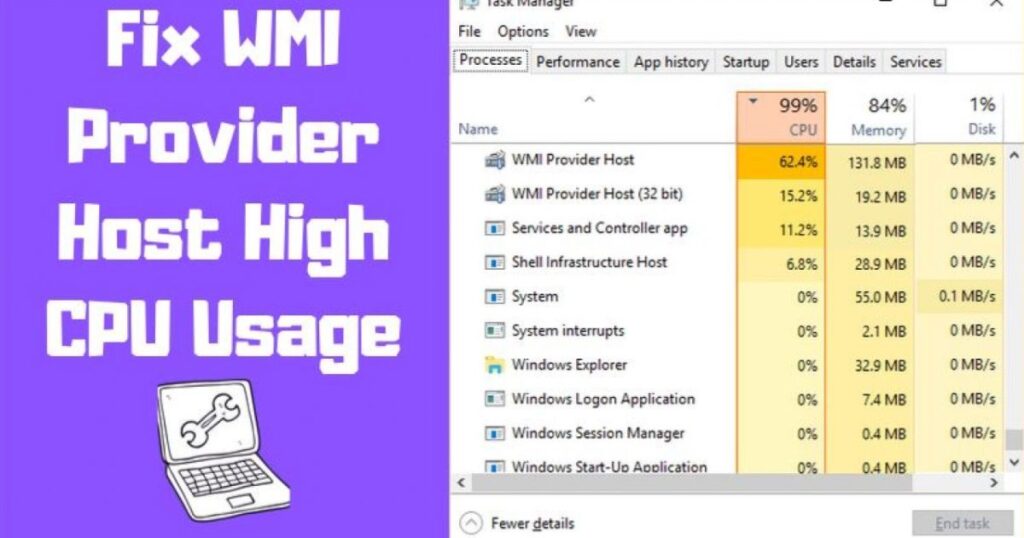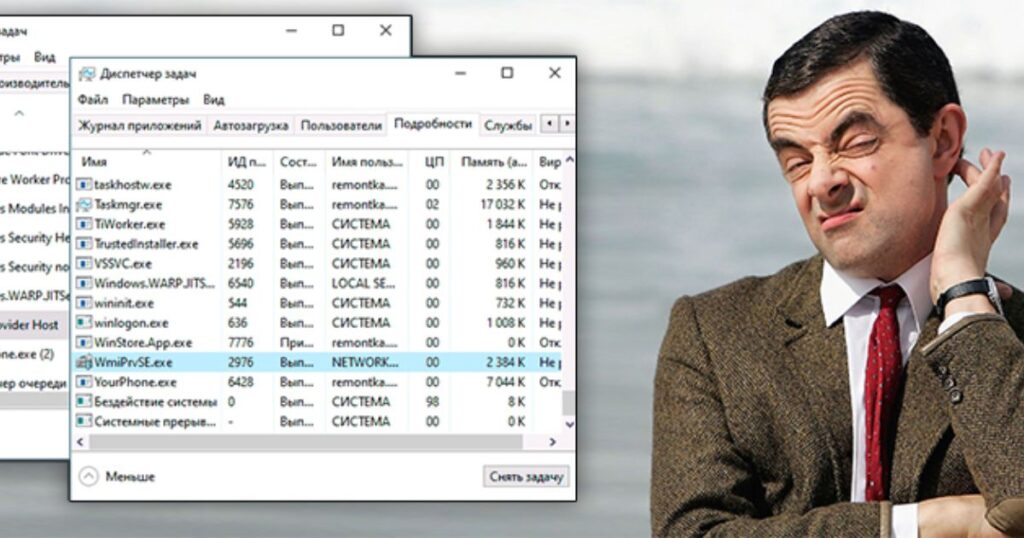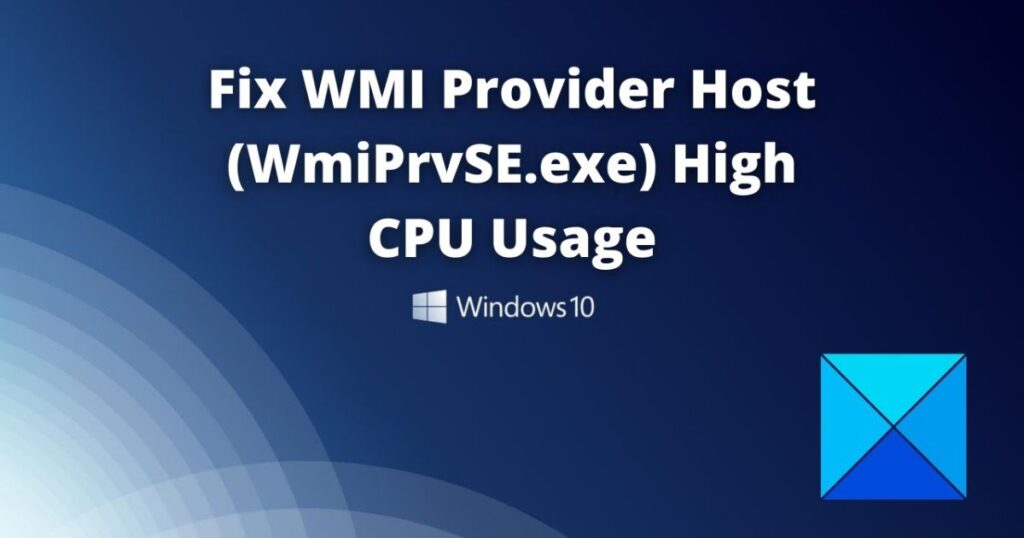Have you ever noticed an obscure process called “WMI Provider Host” (WmiPrvSE.exe) using significant CPU resources on your Windows computer?
If so, you’re not alone. Many users get puzzled by this background process hogging their system resources for no apparent reason. But don’t worry, we’re here to demystify WMI Provider Host high CPU usage and help you understand what’s really going on.
What Is WMI Provider Host (WmiPrvSE.exe)?
WMI stands for Windows Management Instrumentation, a powerful feature built into the Windows operating system. Its primary function is to provide a standardized way for software applications and administrative scripts to request and retrieve various pieces of information about your system’s state and configuration.
The WMI Provider Host process acts as an intermediary, facilitating this data exchange between the requesting programs and the WMI Providers – which are essentially components responsible for supplying the requested system data.
For example, a piece of software could use WMI to:
- Check the status of BitLocker drive encryption
- View entries from the Windows Event Log
- Retrieve information from installed applications that include a WMI provider
This functionality is particularly useful in enterprise environments, where IT administrators need to centrally manage and monitor large numbers of PCs. However, even on home computers, some installed programs may leverage WMI to gather system data for their operations.
Why Is WMI Provider Host Using So Much CPU on My Computer?

Under normal circumstances, the WMI Provider Host process shouldn’t consume significant CPU resources. However, if you notice sustained high CPU usage from this process, it’s likely an indication that another application on your system is repeatedly requesting large amounts of data through the WMI interface.
To identify the culprit process, you can follow these steps:
- Open the Event Viewer (search for it in the Start menu)
- Navigate to Applications and Service Logs > Microsoft > Windows > WMI-Activity > Operational
- Look for recent Error events and click on them
- In the event details pane, locate the ClientProcessId value – this is the Process ID (PID) of the application causing the WMI errors
For example, let’s say you find an Error event with ClientProcessId: 3880. You can then:
- Open the Task Manager (Press Ctrl+Shift+Esc)
- Switch to the Details tab
- Click on the PID column header to sort processes by their ID
- Scroll down and locate the process with PID: 3880
In our example case, this PID belongs to a process called Noise Cancelling Engine by ASUS – likely a utility program that’s misbehaving and overloading the WMI interface.
Once you identify the problematic process, you can research it online, check for available updates, or consider uninstalling/disabling it if it’s not essential for your system’s functionality.
Read this Post: BASNIÃƑ€ŽÃ‚ KY NA DOBRU NOC GOOD NIGHT TALES
While it’s technically possible to disable the “Windows Management Instrumentation” service altogether, doing so will likely break many Windows components and applications that rely on WMI data. It’s generally not recommended to disable this core Windows service.
Can I Disable WMI Provider Host?
As mentioned earlier, disabling the WMI Provider Host (Windows Management Instrumentation service) is not recommended, as it’s an essential part of the Windows operating system. According to Microsoft, “If this service is stopped, most Windows-based software will not function properly.”
Instead of disabling WMI Provider Host itself, you should focus on identifying and addressing the root cause – the specific process that’s causing excessive CPU usage by repeatedly querying WMI providers.
Troubleshooting High WMI Provider Host CPU Usage
If you’re experiencing sustained high CPU usage from the WMI Provider Host process, here are some troubleshooting steps you can take:
- Restart the Windows Management Instrumentation service:
- Open the Services application (services.msc)
- Locate the “Windows Management Instrumentation” service
- Right-click on it and select Restart
- This can help if the service is stuck in a bad state.
- Identify and address the problematic process:
- Follow the steps mentioned earlier to find the process ID causing WMI errors
- Research the identified process online to understand what software it belongs to
- Check for updates or consider uninstalling/disabling the software if it’s not essential
- Update or reinstall the problematic software:
- If the identified process belongs to a known program on your system, check the software vendor’s website for any available updates
- Updating to the latest version may resolve the issue
- As a last resort, you can try uninstalling and then reinstalling the software
- Check for malware or virus infections:
- Although rare, it’s possible that a malicious program could be causing excessive WMI queries
- Run a full system scan with your preferred anti-virus/anti-malware software
- Reset or refresh your Windows installation:
- If none of the above steps resolve the issue, resetting or refreshing your Windows installation may be necessary as a final resort
- This will reinstall Windows while keeping your personal files intact (reset) or start fresh with a clean installation (refresh)
When Is High WMI Provider Host CPU Usage Normal?

It’s important to note that occasional spikes in WMI Provider Host CPU usage are normal and expected. This can happen when legitimate applications on your system request system data through the WMI interface.
However, if you notice sustained, consistently high CPU usage from the WMI Provider Host process over an extended period, it’s likely an indication of an underlying issue that needs to be addressed.
Examples of normal WMI Provider Host CPU usage include:
- Running administrative scripts or system management tools that leverage WMI
- Installing or updating certain applications that integrate with WMI
- Performing system maintenance tasks that involve querying WMI data
As long as the high CPU usage is temporary and doesn’t persist indefinitely, there’s usually no need for concern.
Conclusion
The WMI Provider Host (WmiPrvSE.exe) process is an integral part of the Windows operating system, facilitating communication between applications and system data providers. While it shouldn’t normally consume significant CPU resources, sustained high usage can indicate an issue with another process repeatedly querying WMI.
By following the steps outlined in this article, you can identify the root cause of WMI provider host high CPU usage and take appropriate measures to resolve the problem – whether it’s updating the offending software, uninstalling it, or resetting your Windows installation as a last resort.
Remember, disabling the Windows Management Instrumentation service itself is generally not recommended, as it can break various Windows components and applications that rely on WMI data.
If you’re still experiencing issues or have any questions, feel free to share your experiences or seek further assistance in the comments below.

Dennis, a seasoned tech professional with 5 years of expertise in the field. With a passion for innovation, he’s dedicated to delivering cutting-edge solutions through our website.







